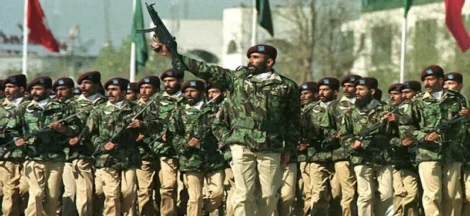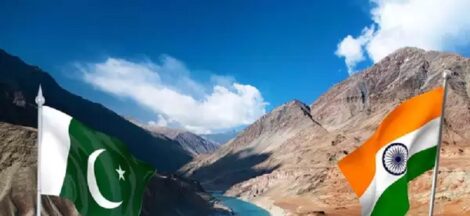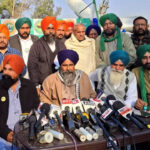By Krishna Jha
On January 13 this year, RSS chief Mohan Bhagwat said that the date of Ram temple consecration in Ayodhya was the day when the “true independence of Bharat” was established. It was one of the great myths that RSS has been trying to make us believe.
After almost hundred years of freedom struggle that had started with the first war of independence fought in 1857 against the British colonial rulers, the nation achieved its freedom on August 15, 1947. There were lives sacrificed, years spent in jail, freedom was attained covered in blood and dirt. Country rose as one with all its diversities. Each and every tributary to the mainstream had its share in the struggle except those who remained indifferent to the process.
Hindutva forces had absolutely no share in the sacred battle that culminated in a freedom for the entire country, its people, communities. No one remained untouched at the shore, except those who wanted to keep the shackle in place. They were in service of imperialism and believed in the exploitative rule. Keen to serve, they wanted to offer them servility of one entire community, called the Hindutva forces. They wanted everyone to believe that freedom lies in slavery and compromise is the best strategy.
To overshadow the glory of country’s freedom, the day of the transfer of power, from British colonialists to us Indians, RSS chief Mohan Bhagwat tried to assure us that August 15, 1947was not the “real” Independence Day. He even went on to say that the “true” freedom was achieved on January 22, 2024 when the Ram temple in Ayodhya was consecrated. He was not promising freedom, he was trying to take the country towards theocracy, and hence promoting communalism, and denial of freedom to all the ‘others’. It was against our Constitution, defying the preamble itself, and thus, rejecting our pillars of democracy, mentioned as equality, liberty and fraternity.
Irrespective of what the post-Independence RSS literature may claim about the organisation’s pre-Independence history, the archival records of the time show that the very foundational objective of the RSS was to transform the anti-British anger of Hindus into anti-Muslim action. It sought to do this by convincing Hindus that their interests were more incompatible with a section of fellow Indians – Muslims – than with the British colonialists. This objective naturally pitted the RSS against freedom fighters who were trying to unite Hindus and Muslims in the struggle for Independence from British rule. This was exactly what the Britishers wanted in order to implement their policy of divide and rule and to perpetuate their control over India.
This was the sum total of the ideology called Hindutva, and with this ideological objective the RSS was founded in 1925 as a Hindutva militia. The RSS was thus a communal private army of Hindu men, who hated Gandhi and his idea of Hindu-Muslim unity and kept themselves away from the freedom struggle. Its leaders claimed to train its members for an eventual fight against the so-called internal enemies – Muslims. Shaped without a constitution, the RSS did not openly define its aims and objects. Yet it was widely perceived as an organization through which the Maharashtrian Brahmins dreamt of establishing in India the Peshwa rule after the withdrawal of the British. The RSS’s adoption of bhagwa (saffron) flag of erstwhile Peshwas as its own flag was seen as an indication of its secret desire. All other communities and castes, therefore, had no sympathy with it.
There was a noticeable difference between the presence of RSS in violence against the Muslim community and the lack of its involvement in the national movement. When Mahatma Gandhi launched anti-salt tax satyagraha and civil disobedience movement in 1930, the RSS felt rumblings within its ranks as some of its young ordinary members were in favour of joining the movement. To stymie the rumblings without revealing the organisation’s desperate bid to remain in the good books of the British, Hedgewar wrote to RSS branches stating that members could join the satyagraha in an individual capacity and that the RSS as an organization had decided not to participate in the movement.
Also since his own lack of participation would have dented his reputation in the eyes of his cadres as this could have been interpreted as flinching from the national cause, he joined the satyagraha but before that resigned as sarsanghchalak since this would have formally associated the RSS with the anti-British upsurge. In contrast, the organizational presence of the RSS in violence against Muslims – which constituted the core of the organisation’s paranoid style of functioning – was something quite frequent.
This foundational objective of the organisation was made public in October 1935 when Hedgewar, during the tenth anniversary of the RSS, publicly declared that the British rule was ‘an act of providence’. The report was published in the Times of India.
Even when India exploded in violent uprisings against the British rule in the form of Quit India Movement in 1942, the RSS maintained its pro-British position and remained cordial with the imperialist power, watching the development indifferently.
Starting at Bombay, the movement quickly spread to rest of India. There were Quit India hartals across the country, and many of them turned into anti-government riots. Security forces sought to suppress the movement brutally, causing massive death toll. The imprisonment of Congress leaders created empty space in politics and gave the Muslim separatist and Hindu supremacist organizations their chance to rush in.
Jinnah declared that it was not in the interest of Muslims for the British to abandon them in a potentially hostile swamp of Hinduism. His logical position was, therefore, to keep the British in India – at least for as long as it took to convince them of the case for Pakistan. Hindu Mahasabha, on its part, stuck to its line of cooperation with the government. Savarkar described the Congress-led movement as nothing but a ‘ridiculous jail seeking programme’ and asked Hindus to boycott it. The RSS toed the Hindu Mahasabha line. (IPA Service)




 Draft Policy On Agri Marketing Brings Hated Farm Laws Through Back Door
Draft Policy On Agri Marketing Brings Hated Farm Laws Through Back Door 